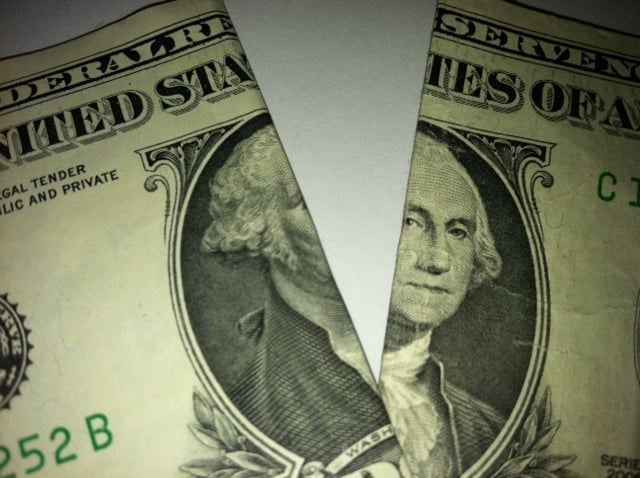Banking, finance, and taxes
Why Rising Interest Rates Might Be at Fair Value in Notes and Bonds
Published:
The stock market and bond market are trying and trying to figure out how to price in the eventual tapering effects of quantitative easing. Ultimately, these markets will both have to price in a real end of quantitative easing. The stock market has risen to new all-time highs while long-term Treasury notes and bonds saw their rates rise roughly one full percentage point since the start of May. The question to ask is whether or not interest rates on the longer-end of the yield curve have reached a fair level. Ben Bernanke succession plans and long-term Treasury auctions this week are both coming at a very critical junction in time. Source: Jon Ogg
Source: Jon Ogg
Ten-year Treasury yields were down in the 1.60% levels at the start of May. The 10-year Treasury note peaked at 2.72% by July 5 and now they have been met with Treasury buyers after the rates hit 2.72% and 2.74% in recent days. You have to go back to August of 2011 to get back into the 2.70% before this last rise in rates. The cycle high in 10-year yields before that was between 3.60% and 3.75%, but the rates peaked at 4% in 2010 and earlier in 2009.
Now we have the yield on the 30-year Treasury bond around 3.73% with a peak in recent days around 3.75% and a peak in early July at 3.79%. At the start of May, the yield went as low as 2.81%. The long-bond rate low came in July 2012 at just under 2.45%, a previously unheard low in yields. The long bond’s 2011 cycle peak yield was 4.79% and that peak yield in 2010 was 4.86% and 5.07% back in 2009.
The long and short of the matter is that interest rates have risen 97 basis points in 90 days from trough to peak versus 113 basis points for the 10-year. At the same time, the 5-year Treasury note also saw its rate rise from a low of 0.64% in May to a peak of 1.61% in July. That is down closer to 1.40% now, but its cycle also rose nearly 100 basis points.
Many investors and savers alike have wondered just how high interest rates may go. If the Federal Reserve is truly not going to exit quantitative easing, then rates may stabilize close to or not that far above the current yields. If the market starts trying to price in a total end to quantitative easing, then that is when you have to really worry about the next 100 basis point rise in interest rates.
Now let’s go back to even more normalized times. Think back when interest rates on the short-end of the Treasury yield curve were 1% on the 1-year T-Bill. The target Fed Funds Rate has been near zero in a 0.00% to 0.25% target range since the end of 2008, and that is when the FOMC had to start adopting the “quantitative” part of easing because it could not take rates under 0%.
The current 30-Day Fed Fund Futures contracts at the CME do not have a 100% chance of Fed Funds rates going above 0.25% until November of 2014. It is not until June of 2015 that the Fed Fund futures market has a 100% certainty of rates being 0.50%. It is also not until 2016, the year of the next presidential election, that the current futures market has a 100% certainty price in for a full 1.0% in interest rates.
If interest rates start to rise on the short-end of the yield curve, history would remind you that the timing of expectations will ramp up and will come in much sooner rather than later. That seems to be the real threat for bond investors.
Unfortunately, it is impossible to call a formal top in interest rates. A lot of may even have to do with who replaces Ben Bernanke as the next Chairman of the Federal Reserve. Janet Yellen is considered to be a Bernanke continuity candidate and Larry Summers is considered to be a new thinker who may want higher interest rates. Keep an eye on the 10-year Treasury on Wednesday because the Treasury will be conducting a 10-year T-Note auction. That will be followed by a 30-year Treasury Bond auction on Thursday.
By the time Friday comes around, we will have a much better idea of where interest rates are headed as we exit the summer. If the auctions do well then rates are likely to have seen a near-term peak. If these two Treasury auctions are poorly received then we might want to brace for another leg up of 30 to 50 basis points in the longer end of the yield curve.
Ever wanted an extra set of eyes on an investment you’re considering? Now you can speak with up to 3 financial experts in your area for FREE. By simply
clicking here you can begin to match with financial professionals who can help guide you through the financial decisions you’re making. And the best part? The first conversation with them is free.
Click here to match with up to 3 financial pros who would be excited to help you make financial decisions.
Thank you for reading! Have some feedback for us?
Contact the 24/7 Wall St. editorial team.